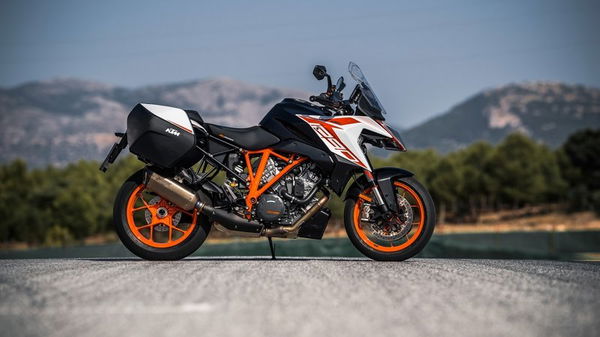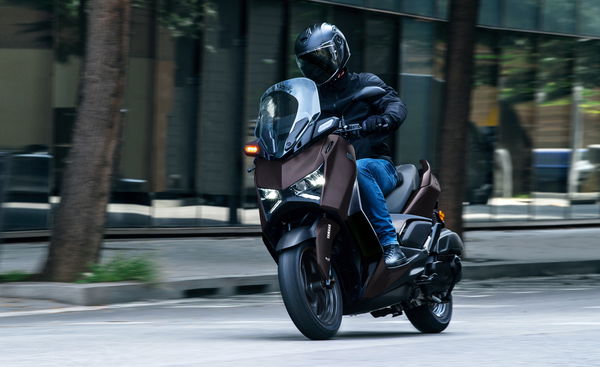Antiques Road Show | Top 10 motorcycles of yesterday that are classics of today
Cheese, wine, Troy Bayliss... some things just get better over time - not least the value of these once ground-breaking, now classic motorcycles
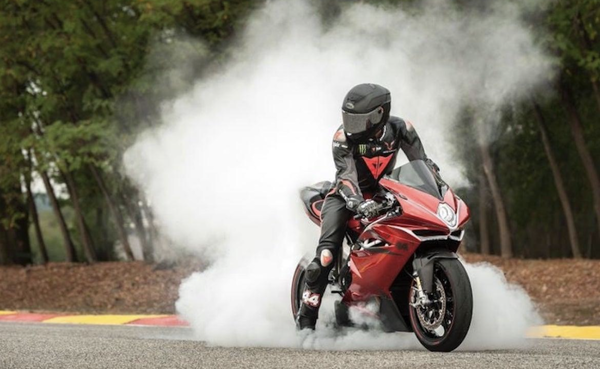
There is no way of knowing for certain which motorcycles will stand the test of time to both appreciate and be appreciated one day... maybe - just maybe - you may already be riding a future classic.
With the arrival of new motorcycles like the sweet handling Aprilia RS 660, the elegant MV Agusta Superveloce, perhaps even the utterly bonkers Kawasaki H2, there are a few worthy candidates that could very well one day prove a very savvy investment.
So what to look for in a classic for the future... best to check which motorcycles of yesterday have matured into value-added specials of today.
Full disclosure, we’re not talking obvious legends such as Honda’s RC30, which achieved classic status decades ago, or even GP replica two-strokes. The days of picking up an NSR250 or even RGV for a snip have long gone.
But there are still plenty of great, even classic bikes around from that era which can still be had for a song, deliver a brilliant biking experience, are certain to appreciate and, in our view, will soon – if they’re not already – be considered as ‘classics’. With modern advances making cushioning the issues of poor reliability and lack of parts back in the day, there are some choice models which could prove a wise, discerning choice.
They’re subjective, of course, but here are our current Top 10 contenders from that era, in chronological order – and why they’ll be considered classics in the future…
1985-1988 Suzuki GSX-R750/1100 ‘Slabby’
Let’s start with an obvious one – but one that’s still available so cheaply it warrants inclusion here. We all know the 1985 GSX-R750F story by now: the first ‘racer-replica’ (as inspired by Suzuki’s endurance XR41), ultra light weight, revvy 100bhp power and such a winner straight out of the box it directly influenced every superbike which followed.
An 1100 joined it in ’86 and the GSX-R dynasty was born. That CV makes the ‘Slabby’ a bona fide classic but it’s also a light, invigorating ride today (albeit with an odd, tail-down riding position, weirdly slim proportions and bulbous fairing by modern standards) although its brakes and suspension will seem crude.
Back in the ‘80s most were raced or thrashed and crashed (leading to the creation of the bug-eyed, MX-barred ‘streetfighter’) so good originals are rare. A mint, UK, blue/white (preferred to the red/black alternative) first year model is the most desirable, and can be expected to go for over £5k.
But an import (three dials not two), second year or slightly rougher example can still be found for not much over £3000 while the 1100 version, which is a better, meatier street machine, is less valued with good ones for around £3500. Looked after, they’ll only appreciate in value.
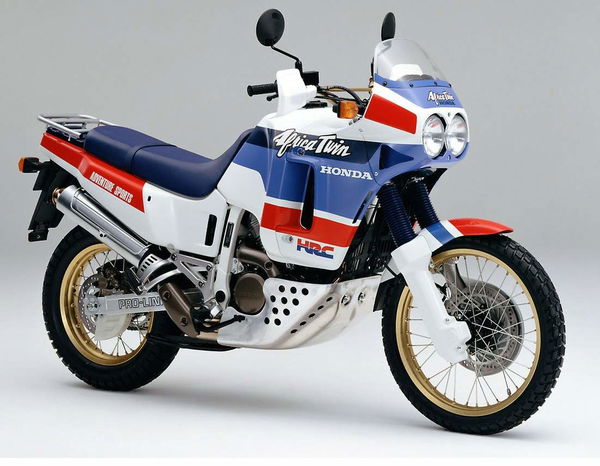
1988-1989 Honda XRV650 Africa Twin
Here’s one not a lot of people know about – but they should. While Honda’s latest 1000/1100 Africa Twin has breathed new life into one of the great adventure bike monikers and the old 750 (1990-2003) continues to be valued for its versatility and style with good condition later models easily fetching over £4500, the original 650 is, in our view, the most collectable and ‘classic’ of all.
Less well known largely because it was never officially imported into the UK, the original 650 was conceived as a road-going replica of Honda’s then all-dominant NXR750 Paris-Dakar winner, aimed primarily at Italy and France and built, based around a reworked Transalp engine, by no less than HRC. So yes, in many ways, it’s the adventure bike equivalent of the RC30.
That class shows, too, with exquisite detailing, Dzus fasteners, alloy everything, dual texture seat and more. The 750 that followed and which did come to the UK may have looked similar (although most of the bodywork is different) and have 5bhp extra but, built as a standard production bike rather than by HRC, was nowhere near as classy, heavier and not as good off-road.
In the UK 650s are rare (adding to their exclusivity) but also durable, little understood and undervalued. Not long ago you could get one for around £2K. Now it’s more like £3-3,500, but it’s still a steal.
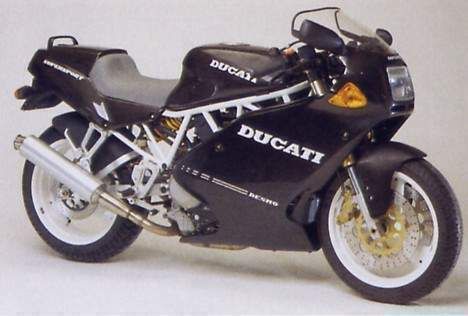
1991-1998 Ducati 750/900SS
Everyone goes on about the game-changing 916 and how it was the 1993 Monster that actually saved the Italian company but there’s another Ducati from that era which largely gets overlooked.
The Supersport of the early-mid-1990s is, pretty much, the definitive, ‘old school’ Ducati, delivering a classic, air-cooled, ‘L-twin’ vibe in a fine-handling street sportster chassis all dressed in handsome, timeless bodywork, but, being overshadowed by those two bikes, is largely ignored and undervalued.
The first incarnations arrived in 900 and half-faired 750 form in 1989. But in 1991 it got a subtle styling tweak, was significantly improved with Showa suspension and Mikuni carbs and, with 85bhp and bags of characterful grunt delivered the definitive Ducati street experience – plus there was a single-disc braked, half-faired 750 for those on a tighter budget.
Sure it was no Japanese superbike beater but the ‘SS’ delivered an evocative, enjoyable and affordable street experience. In 1998 it was replaced with a fuel-injected version restyled by Pierre Terblanche, a bike which, although dynamically superior is also so ugly it’s a machine only its mother could love.
The earlier SS though, remains undervalued and is classic, ‘analogue’ Ducati. A good, later 900 can still be had for around £4K. The desirable Superlight and FE versions for a bit more while a 750 can start with a ‘3’.

1990-1999 Kawasaki Zephyr 750/1100
It’s ironic to recognise that, in these days of retro roadsters being everywhere, whether they be Bonnevilles or Scramblers, RnineTs or Royal Enfields, one of the best – and certainly most authentic – is also one of the most overlooked – Kawasaki’s original, ‘retro-before-its-time’ Zephyr.
Launched way back in 1990 the original Zephyrs, the 550 and 750, were based around original 1970s air-cooled four-cylinder engines and twin loop chassis but updated with more modern suspension, brakes, wheels and given a refresh with new styling, clocks and switchgear.
Back then no-one really knew what a ‘retro’ was and they were largely dismissed as old-fashioned budget bikes. From today’s perspective, however, the full-size, 71bhp, ultra-authentic 750 was actually OK (we’ll ignore the too-small, short-lived 550) and the 1100 which followed in 1992, was a proper retro beast, especially when it later gained even more authentic badging, paint jobs and even wire wheels.
Most of this, today, has been forgotten, although good 1100s are increasingly prized. A decent 750, though, can still sometimes be found for under £3K and makes even an Enfield look expensive.
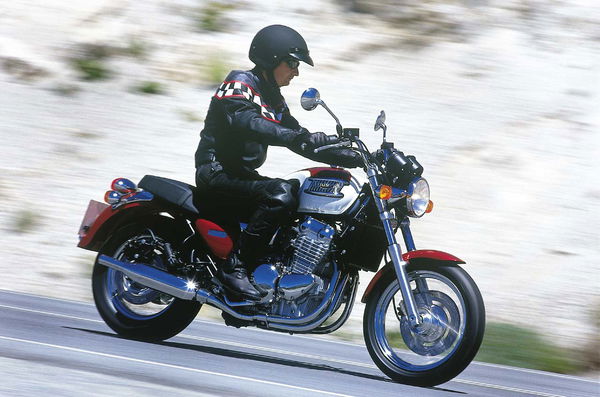
1995-2004 Triumph Thunderbird 900
Another retro with more than a hint of irony about it. When Triumph was relaunched at Hinckley by John Bloor in 1991 its early bikes, the Daytona, Trophy and Trident, used a modular approach to deliver 750/900/1000 & 1200cc variants and emphasised modern engineering and reliability to the point of shying away from heritage.
That, considering Triumph’s line-up is now dominated by modern classics, seems, with hindsight, something of a missed opportunity. That began to change with the semi-retro Speed Triple in 2004 then, for the following year, came its first true ‘retro’ – the Thunderbird 900. The T-bird was conceived to spearhead Triumph’s entry into the US market and based on Trident 900 mechanicals and Hinckley certainly didn’t cut any corners.
The 900 triple was restyled and retuned for extra torque, the chassis boasted quality alloy Akront wire wheels, the styling was convincing and paint, chrome and general quality was first rate. It handled well, too. Later versions cut costs (steel rims, less chrome etc), a Sport variant handled well but lost its looks and early versions had some carb problems.
But, despite the arrival of the first Bonneville in 2000, the larger, punchier and arguably better quality T-bird, has retained a strong, loyal following ever since with prices rarely falling below £3K and generally on the rise. If you want a meaty, British-built, quality and classy Triumph retro, there’s (still) none better.
1995-1998 Honda VFR750F
A Honda UK PR person, according to legend, once infamously called the last generation VFR750 the ‘best bike ever built’ and few journalists at the time disagreed. Over 20 years later Honda’s peerless V4 sports-tourer retains a timeless class more modern iterations can’t match, remains useful, versatile and 100bhp enjoyable and, best of all, is so reliable and durable good versions with under 20K on its classy clocks can still be had for well under £3K.
The third generation successor to the original 1986 VFR750F, which itself had been deliberately over-engineered by Honda to guarantee the success of its new V4s, was, simply, without fault. The V4 motor is characterful and flexible, the chassis neutral and comfortable, equipment and build was excellent and, with its Pro-Arm and mature red bodywork it looked great, too. It still does.
Over 20 years on many, inevitably, are now a little tired but good examples still exist, can be had for bargain money (we spotted a near-mint 16K-miler for just over two grand), are as usable as ever and bound to appreciate. As long as you get one in red.
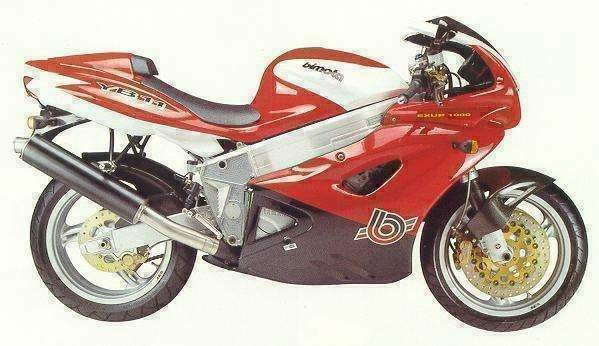
1996-2000 Bimota YB11
Ah, Bimota, Bimota, where did it all go wrong? One could write dissertations on the matter... While in the ‘80s the Italian specialists had deservedly established a reputation for putting Japanese powerplants in fine handling sports chassis by the mid-1990s the Japanese had become pretty good at doing it themselves for half the price.
As a result, the Rimini firm’s GSX-R1100-powered SB6 of 1994 was effectively its last success while the Yamaha Thunderace which followed in 1996 was largely a flop, quickly outpaced and made obsolete by the likes of Yamaha’s own R1.
That also explains why the SB6 has already achieved classic status, with prices well in excess of £8K while the YB11, despite having 145bhp and an equally fine-handling, lightweight, twin beam chassis, is comparatively undervalued at around £6K. That situation can’t last forever.
The YB11 is just as much a ‘true’ Bimota, is exotic, exclusive and entertaining as any and also marks the end of an era. Buy one before prices go bonkers.
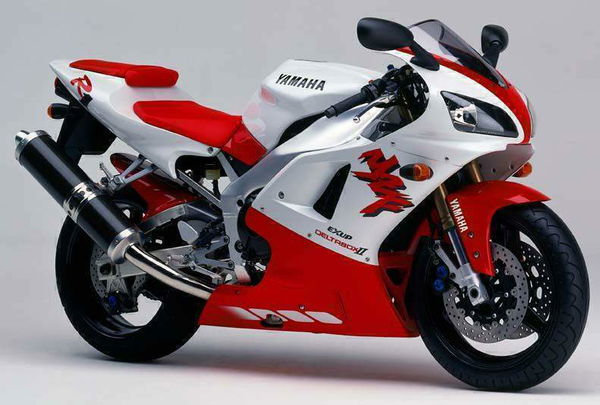
1998-2000 Yamaha YZF-R1
Marking a new era of revolutionary, ballistic Japanese superbikes, is now considered a ‘future classic’ in its own right. In truth, the ‘first gen’ Yamaha R1 of 1998 has been considered something of a classic for some time. With 150bhp and just 177kg it, as has often been written, rewrote the superbike rulebook and largely confined 750 superbikes to history while its successors have been the class benchmark pretty much ever since.
First editions of success stories always become classic in time and the first R1s are now prized, not least because they still ride as well as ever and deliver a thrilling, pre-digital experience few others can match. That said, although prices are on the rise, especially for mint, standard, white/red examples. Prices over £7K are now normal while we’ve also seen ones advertised for as much as £11K.
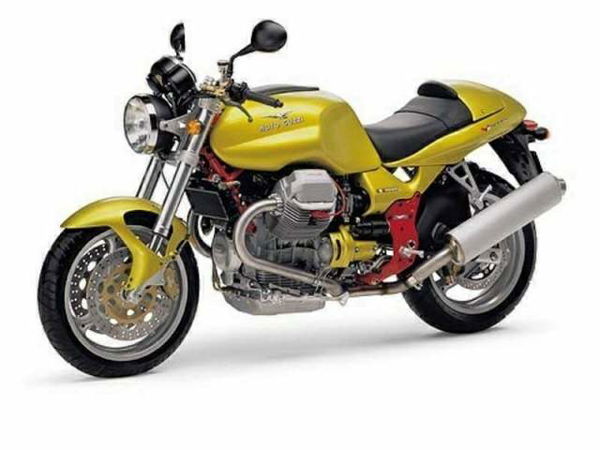
1999-2003 Moto Guzzi V11
Another bike – or family of bikes – that has cruelly ‘slipped under the radar’, the semi-retro-styled V11 was basically the biggest fruit of Aprilia’s short-lived ownership of Moto Guzzi between 2000 and 2004 (yes, we know the first V11 came out in 1999 but bear with…). But while the first Café Sport was a good-looking, semi-retro roadster/café racer using Guzzi’s big 1100cc, 91bhp transverse V-twin, it was also crude, poorly finished and had some reliability concerns.
Enter Aprilia, who promptly injected a wealth of extra quality and refinement, span off a whole family of V11 variants, many sprinkled with top notch cycle parts and components from the likes of Ohlins. It couldn't save the brand though in its then-guise, with Aprilia, together with Moto Guzzi, taken over by Piaggio in 2004.
Today, however, those V11s are worth a closer look. Models like the Coppa Italia and Nero Corsa boast top spec Ohlins, Brembos, carbon and fabulous finishes and detailing. Even base versions have quality Marzocchis and more. There are roadster and half-faired versions and all are as evocative, classy and good looking as big Guzzis get. Yes, ultimately they’re still heavy and rustic but most are also cruelly undervalued, so can be found for as little as £4K and are sure to appreciate.
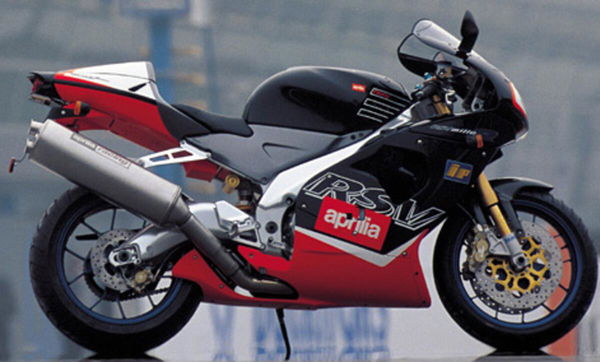
1999-2003 Aprilia RSV Mille
Another bike that makes you feel sympathy for the whole Aprilia experience of the early Noughties. The Italian firm’s all-new, Ducati 996-rivalling superbike wasn’t a bad machine – far from it.
Its Rotax 60-degree V-twin, with 128bhp, was more powerful; it polished aluminium twin beam frame was classy and fine-handling and, with roomy, ‘real-world’ proportions it was also more usable for most. Trouble was, the RSV was also expensive, failed (just) to usurp Ducati in WSB and wasn’t much of a looker.
It did improve. Styling was tweaked subtly in 2001 and high spec R and Factory versions were added, although none improved Aprilia’s fortunes enough to stave off financial collapse.
As a result, those early RSVs, though good, became used bargains. ‘Gen 1’ Milles can still be had for as little as £2400 which, compared to a comparable Ducati is an absolute steal while 2001-on bikes are rarely over £3K with Ohlins/Marchesini etc equipped Rs and Factorys available from around £4K. Italian exotica doesn’t get any cheaper – and they’re well built and reliable, too.
If that isn’t a sure-fire ‘future classic’ we don’t know what is.
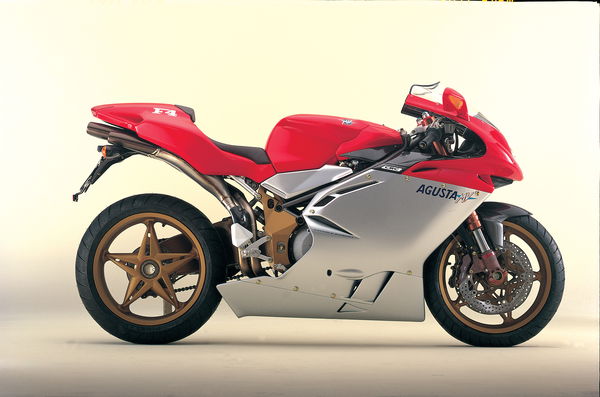
1999 - 2018 MV Agusta F4
The last MV Agusta F4 may not have rolled off the production all that long ago (and may still return one day...) but the Varese firm's flagship sportsbike for sure attained iconic status during its near two decades on sale.
Vying with the Ducati 916 for status as Massimo Tamburini's finest creation, it's a testament to the late designer's legacy that the muscular, yet elegant silhouette and intricate attention to detail went almost untouched in that time and continues to turn heads today.
More exclusive and discerning than Ducati and Aprilia's top line sportsbike offerings, put the F4 on a plinth and it is indeed the very example of MV Agusta's 'Motorcycle Art' tagline, but on the road is where it very much belongs.
Early versions of the F4 came in 750cc guise before being upgraded to more powerful 998cc and 1078cc units, with the later models punching out a fiery 212bhp... even Lewis Hamilton owns one. In fact, his name and others are featured on myriad special edition variants of the F4 that MV Agusta curated to ensure greater exclusivity, topping out with the RC inspired by the firm's (brief) foray into the WorldSBK Championship.
While patchy reliability and restrictive parts/dealer networks made owning one a tug-of-war between head and heart at times, few motorcycles make the heart beat quite like the MV Agusta F4... yesterday, today or tomorrow.
